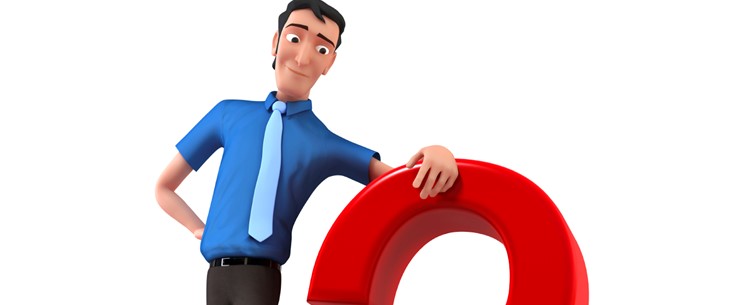By Michael Hilkemeijer
A number of years ago, I decided to pursue one of my ambitions and completed a Diploma in Screen and Media (Animation). It was something that I really enjoyed as I have been creative with my own artistic talents in my younger years.
Animation was also something that I used to promote learning in my former career as an ICT teacher and while it was challenging it was all worth seeing at least some productions from students being completed.
Benefits
When initiating projects of digital animation in the classroom, it can boost learning in the following ways:
- Benefits visual learners to attract and engage students;
- Keep students concentrated through storytelling;
- Simplify knowledge for better understanding;
- Help store information for better remembering and recalling of knowledge.
(flearningstudio.com)
Digital video production can:
- Increase child engagement with the curriculum;
- Promote and develop a range of learning styles;
- Motivate and engage a wide range of children than traditional teaching methods in early childhood education, so providing greater access to the curriculum.
Digital animation productions in the early childhood learning environment also adds another aspect to using digital cameras. Additionally, it can offer opportunities for young children who are more comfortable and competent with the visual mode to succeed (Marsh, 2008).
What do you need?
When using digital cameras for filming you can find a number of affordable devices that you may already be familiar with such as video recording using tablet computers such as iPads or even smartphones (note: never use personal devices), digital still image recording such as those just mentioned and stand-alone devices, webcams can also be used for recording and digital blue cameras.
Computers (desktops and laptops) are useful, of course, for uploading digital still images into editing software such as Adobe Premiere, iMovie, Kartouche and Windows MovieMaker.
Data projectors are a great way to project and display the films once they have been completed.
Examples of skills attained
In the early childhood learning environment, it is important to understand that many children will not develop the following skills and that unless there is curriculum guidance children can repeat the same experiences in the future years. As a consequence, it could lead to them failing to address particular aspects of editing. It is important that there is a developmental sequence included that can be applied to children’s work.
- Technical skills – these are typically obtained through actions such as controlling the mouse and using the digital camera in addition to using editing software. The knowledge, skills and understanding would include for example, move cursor to desired space; use left-hand button to select; click and drag; find appropriate button for taking photograph; use various functions appropriately (timeline, stop/replay buttons, adding sounds).
- Visual skills – when children learn to frame shots, they will develop skills such as positioning characters and artefacts appropriately; use close-ups, mid-shots and long-shots.
- Understanding of narrative – when young children create stories, they do so in three parts – beginning, middle, end; they also create stories with more than one character; they create the setting.
- Understanding of multimodality – young children will use different modes and, in the process, develop skills such as understanding the affordances of different modes; becoming aware of the differences in affordances of various modes; and understanding the processes involved in transduction across modes.
- Awareness of audience – when children create films that reflect the interests of their peers they will identify themes which will interest the audience as well as identify props and soundtracks which will attract the audience.
- Critical skills – reflection will be a very important part of their learning and young children think about making future changes where necessary. The skills attained will include identifying aspects of the work which need changing. For example, shots which included their own hands. Also, they will identify features where are particularly successful in meeting the audience’s needs and repeating these.
- Understanding of genre (animation) – the type of animation which most young children in preschool use is stopmotion animation. At the end of their production, they then should have a better understanding of the principles of stopmotion. Principles such as it is actually a series of still images portraying small changes in movement can, when placed together, create the illusion of larger movements. Additionally, they should be able to comprehend the importance of principles such as continuity.
These are just an example of the types of skills that young children can attain through the various actions undertaken in the production of their animation.
Ideas for using this digital media
Slow motion or stop motion animation is a great way to incorporate digital technology in early childhood education. Planning will be essential to ensure that children will learn from this context that digital media like is a tool that is designed for a specific purpose. You will be able to plan using a thematic approach or an approach which is based on the breadth and depth of the Early Years Learning Framework.
Here are some ideas for you to get started:
- Children could create a short stop motion animation with plasticine figures and sets using animation software;
- Watch Claymation videos like ‘Wallace and Gromit’;
- Retell a page from one of their favourite stories;
- Produce non-narrative films;
- Represent the growth of a bean as an animation.

Case Studies
These case studies are taken from Marilyn Fleer (2017, p. 143- 146). She discusses them from the perspectives of both the children and teacher. They highlight how animation is used in education today.
Case study 1 - Goldilocks and the Three Bears
The children and the teachers are seated in a circle on the carpet area for group time. The children are each given a musical instrument to hold and later play. Projected on to the wall is the slowmation animation of Goldilocks and the Three Bears that the children have previously created. The purpose of the group time is to re-tell the story, while looking at the projected animation, and to create a ‘digital soundtrack’ and narrative of the fairytale to record over the animation to make ‘their movie’, as explained by the teacher: ‘Have a look at the wall. Can you all see the movie on the wall? This is the story we have made of Goldilocks and the Three Bears. We are going to make the music for it. You know how when you watch a movie … So we have to watch the movie whilst we make the movie.’
Teacher Perspective
Key points –
- Teacher uses the term ‘movie’ to help the children conceptualise holistically the task of making a slowmation;
- Teacher create a group context for making the animation in a way that is meaningful to the children.
Children’s Perspective
- Children work collectively to ‘re-tell the story’ through the use of musical instruments.
- This approach allows the children to feel a part of the technical process of making voiceover and contributing to the narrative;
- The collective approach allows the children to make their movie, even if this could not be easily achieved individually.
Case study 2 – The Three Bill Goats Gruff
Two teachers and a group of children aged 4.6–5.7 were followed over a five-week period as they used iPads and props to create an animation of The Three Billy Goats Gruff. The teachers initially used a storyboard approach to map with the children the different phases of the fairytale. One of the activities in the centre was the creation of bridges from scrap wood. One of the bridges made by the children was placed on the imagination table where plastic goats were provided and a troll. In addition, the teachers also role-played the fairytale with the children, digitally recording their role-play, which was then used as the ‘voiceover’ for the slowmation animation.
Two children (Alison and Timmy) and their teacher are positioned next to the iPad which is standing on a table and directed to the imagination table where a wooden bridge and plastic figures are available for the children’s use to re-tell the fairytale of The Three Billy Goats Gruff.
Alison is positioned in front of the scene as Timmy says, ‘Let’s go’ to signal to her to come back to the iPad and press the camera switch. Alison responds by saying as she moves back to the camera, ‘Now … and press it, yeah … waiting’ in order to ensure that Timmy does not press the button until she is out of the scene. Timmy, who is anticipating the next part of the storytelling to be captured on the iPad, says, ‘Get the troll out … I said get the troll.’ Alison responds by positioning the troll under the bridge, but playfully signals to Timmy to wait before pressing the button on the iPad camera.
The two children coordinate their actions as they take photos of the props, moving them slightly, before taking another photo. The teacher holds the iPad steady as the children press the button, and she also provides support to the children by prompting them when needed. However, the children mostly coordinate their actions and direct each other to re-present the fairytale as a slowmation. A high level of intersubjectivity between the children and the technology is evident (Fleer, 2017).
Looking again at it from the teacher’s perspective:
- She positioned herself as a support – physically and conceptually. This is demonstrated when she physically holds the iPad to stop if from falling when the children press a button. Conceptual support is provided by being in close proximity as the children re-tell the story through moving the objects and pressing the camera button to capture the image.
- The children are prompted only it is needed which means allowing the children to do what they can do independently. This gives the children control over the creation of the slowmation.
- There is a high level of teacher intersubjectivity present when the support is given to the children as they contribute differently to the making of the slowmation.
In this particular case study, the children:
Coordinated their actions both conceptually and socially as they demonstrated a high level of intersubjectivity between the fairytale narrative, each other and the digital device. This is evident when Timmy controls his urge to press the button of the camera, waiting for Alison as she says ‘wait’ and always in the context of the fairytale progressing.
Conclusion
Many projects in the past have proven that very young children are able to develop digital, animated films if they are given the appropriate scaffolding and support. The level of ICT capability that can be achieved in such an activity makes it ideal for one of the best ways of integrating digital technology in early childhood education. Such skills and knowledge will be vitally important in the years given that it has implications for not just their social purposes but also for economic and political aspects that will determine how they will thrive in the workforce.
